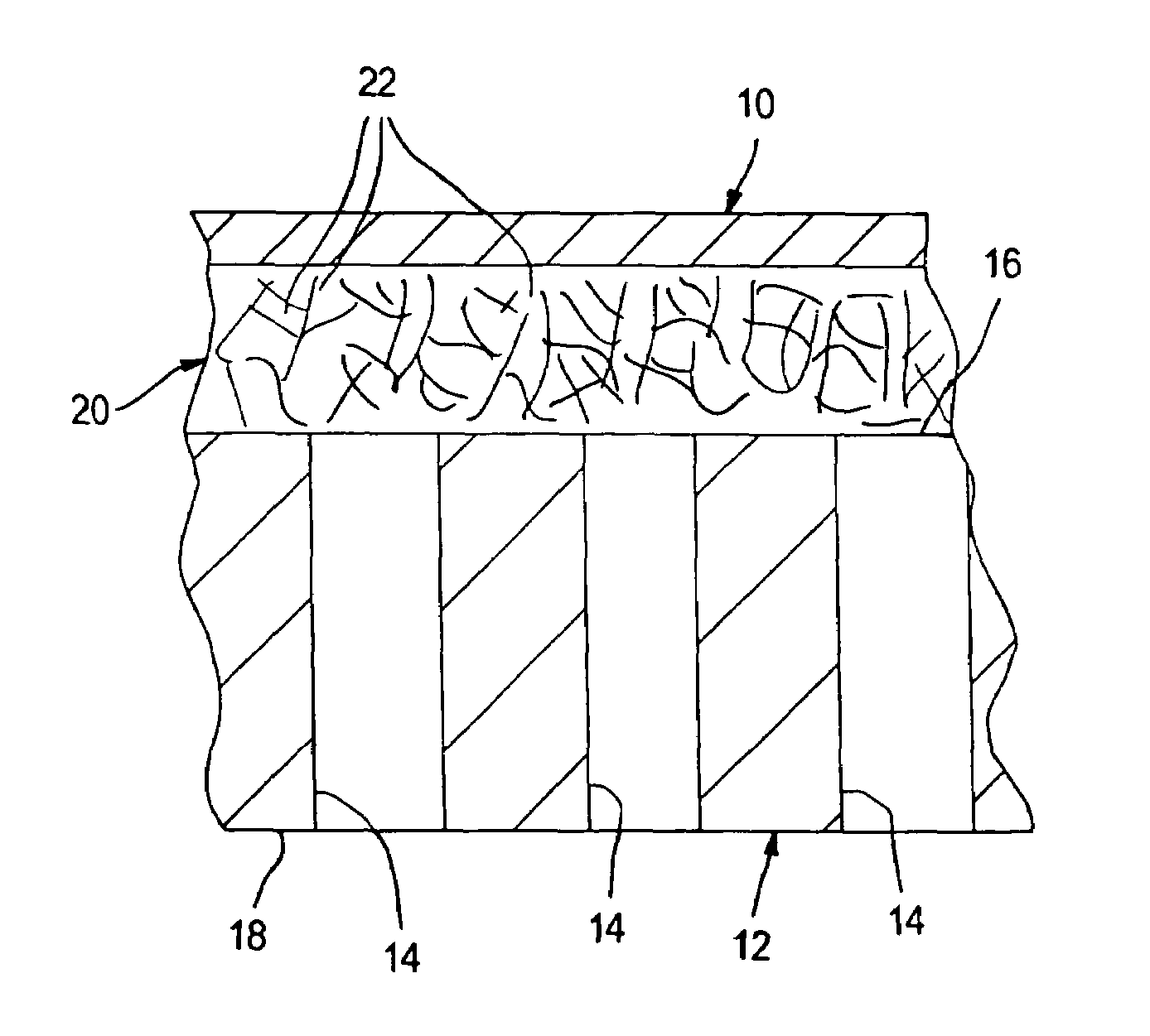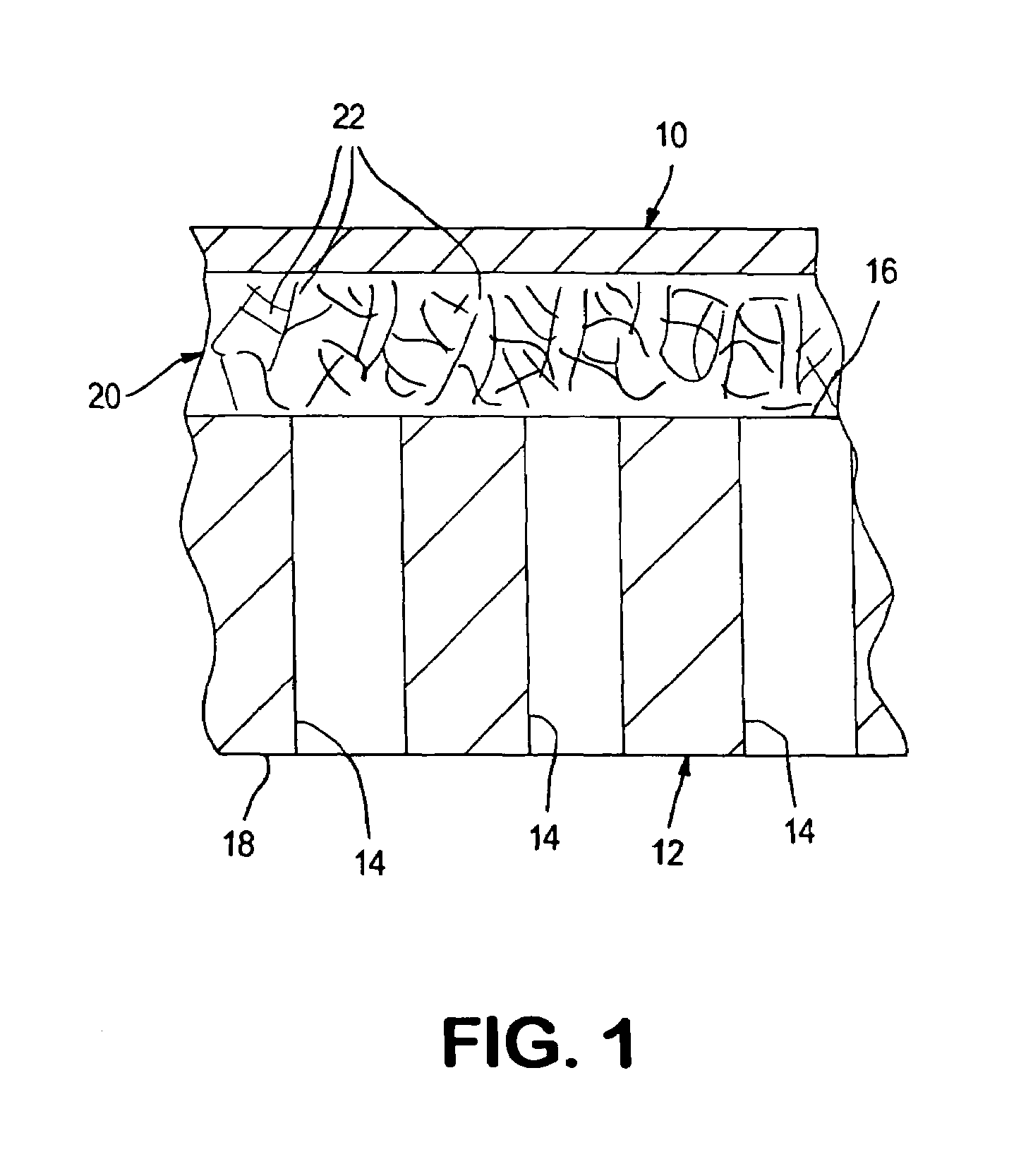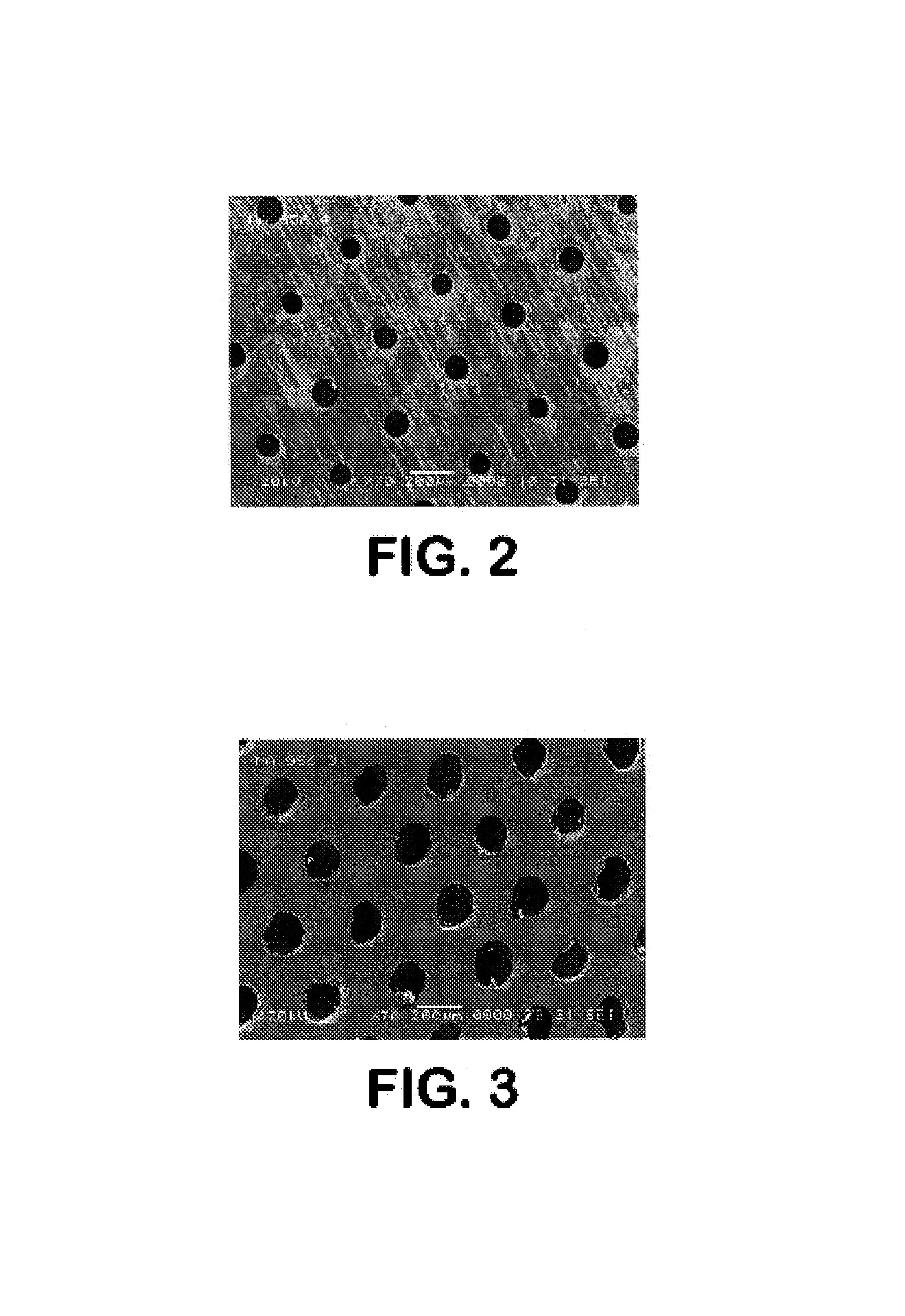Composite oxygen ion transport element
a technology of oxygen ion transport element and composite oxygen, which is applied in the direction of hydrogen/synthetic gas production, inorganic chemistry, chemical/physical processes, etc., can solve the problems of inhibiting flux performance, and achieve the effects of reducing expansion stress, high toughness, and increasing toughness
- Summary
- Abstract
- Description
- Claims
- Application Information
AI Technical Summary
Benefits of technology
Problems solved by technology
Method used
Image
Examples
example 1
[0058]A metallic plate, about 1.5 mm in thickness, formed of MA956 alloy was obtained from Special Metals Corp. of Huntington, West Virginia, United States. Discs of about 30 mm in diameter were cut from the plate and perforated by E-beam drilling at Acceleron Inc. of East Granby, Connecticut, United States. The perforations were confined to a central area of the discs of about 16 mm. in diameter to form and thereby simulate support layer 12. The perforations were conical or as viewed in transverse, cross-section as being tapered. Thus, the openings on one side of the resultant support layer 12 had a diameter of about 75 microns as shown in FIG. 2 and the openings on the other side of the support layer 12, as seen in FIG. 3, has a diameter of about 150 microns.
[0059]The resultant perforated disc forming the support layer 12 was prepared for coating by using graphite as a pore filler. The disk was then plasma sprayed at the side with openings of about 150 microns with LSFC to produce...
example 2
[0064]In this example, a dense layer 10 was formed using mixed conductors, ionic conductors, and a metallic conductor. In this example, the components were chosen such that the dense layer had a resultant thermal expansion coefficient very close to that of support layer 12 which was fabricated from MA956 alloy.
[0065]The dense layer 10 on support layer 12 contained about 40% by weight LSFT, 40% by weight “CGO” (Ce0.8Gd0.2O), and about 20% by weight silver. The support layer 1 had a diameter of about 25.4 mm and thickness of about 1.5 mm. The difference between the coefficient of thermal expansion of the dense layer material and the MA956 support layer material is less than 1 ppm / ° K. over the range of about 100° C. to about 1000° C.
[0066]The material for the dense layer 10 was prepared by first obtaining about 40 grams of LSFT powder having particle sizes of between about 20 and about 30 microns agglomerated from primary particle sizes of between about 0.3 microns and about 0.5 micro...
PUM
| Property | Measurement | Unit |
|---|---|---|
| pore diameter | aaaaa | aaaaa |
| pore diameter | aaaaa | aaaaa |
| porosity | aaaaa | aaaaa |
Abstract
Description
Claims
Application Information
 Login to View More
Login to View More - R&D
- Intellectual Property
- Life Sciences
- Materials
- Tech Scout
- Unparalleled Data Quality
- Higher Quality Content
- 60% Fewer Hallucinations
Browse by: Latest US Patents, China's latest patents, Technical Efficacy Thesaurus, Application Domain, Technology Topic, Popular Technical Reports.
© 2025 PatSnap. All rights reserved.Legal|Privacy policy|Modern Slavery Act Transparency Statement|Sitemap|About US| Contact US: help@patsnap.com



